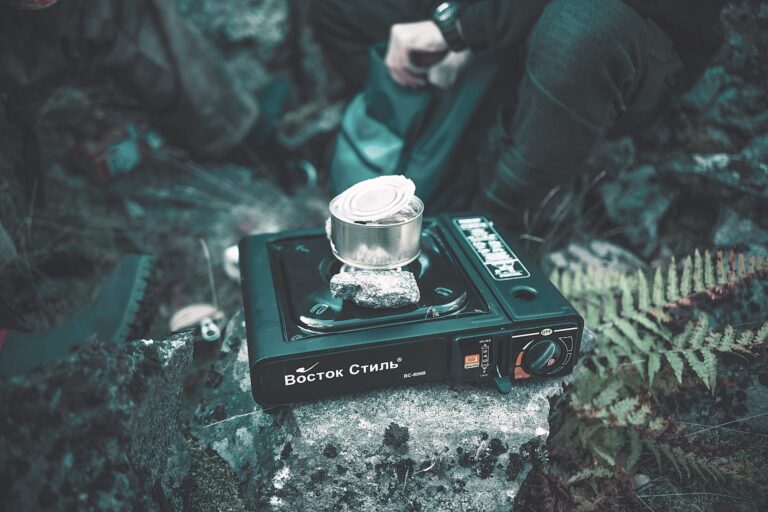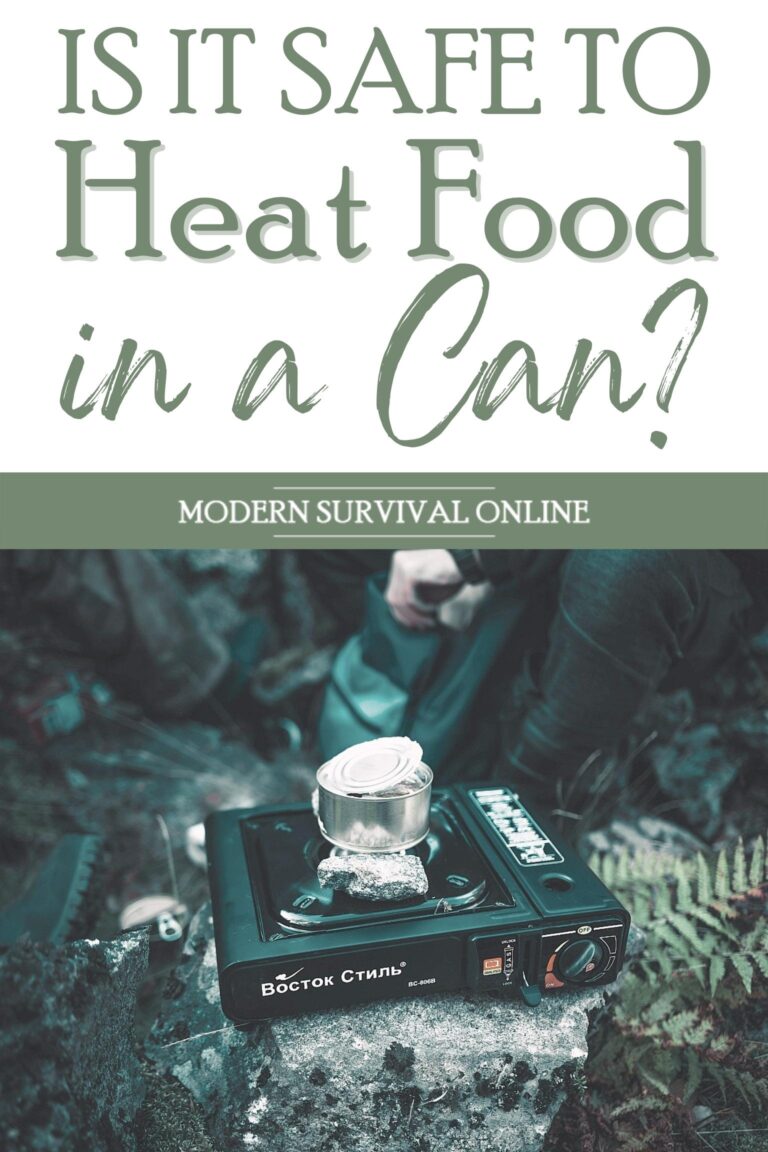Canned food is a reliable, convenient option, and aside from being an everyday staple in the kitchen it also serves as a fundamental part of a long-term food storage plan.

You might have seen various depictions in media of people heating up canned food right in the can prior to eating it, but is this safe? Is it safe to heat canned food in the can?
No, you should never heat canned food directly in the can whether or not the can has been opened. Sealed cans can build up to dangerous amounts of pressure, leading to an explosive eruption of scalding liquid.
Even a can that has been opened or vented will likely contaminate food as the plastic liner breaks down, or the steel releases harmful elements into the food.
Yes, steel is often used as a durable and efficient material for all sorts of cookware, but that doesn’t mean that a common steel can is suitable for the purpose.
In any case, it is a bad idea to heat up canned food while it is still in the can. Keep reading to learn more.
Pressure Buildup in Sealed Cans is a Serious Danger
You might have seen people in movies or TV heating up sealed cans of food right on a stovetop or over a fire.
Then, they crack the seals and enjoy a steaming hot meal with hardly any mess. What could be nicer? Turns out, almost anything.
This is not only lazy cooking, but it’s also dangerous. Canned food can build up tremendous pressure if heated too high or for too long, and this pressure can cause the can to violently rupture or even explode.
Explosions from steam pressure are no joke, and they can cause serious injuries.
Even if the can doesn’t explode, the scalding hot liquid inside can spurt out when a seal fails and may cause serious burns.
If you don’t want to shower the surrounding area, yourself and everyone else with screaming hot stew or green bean water, don’t do it.
Modern Cans Have Liners that Will Break Down in High Temps
Even if you’re careful not to heat the can too much, there’s still a risk of dangerous chemical contamination.
If you’ve ever looked closely at the lining of a can of food, you might have noticed a strange-looking material that looks a bit like plastic.
This material is actually called polyethylene, and it’s one of the most common materials used to line cans.
Polyethylene is a type of plastic that is very durable and resistant to both heat and chemicals. It’s also relatively inexpensive, which makes it an attractive option for food manufacturers.
In addition to polyethylene, other materials that are sometimes used to line cans include aluminum and tin.
These materials provide good protection against both oxygen and moisture, helping to keep canned food fresh for longer periods of time.
But these plastic liners in food cans are not meant to withstand high temperatures, and they can break down under high heat releasing harmful chemicals into the food you then eat. Not good.
Even the Steel Itself Can Release Harmful Elements into Your Food
When at camp after a long day, or firing up a portable stove during a power outage, you might not think twice about heating chili in a can for supper.
Just this once can’t hurt, right? After all, it’s just metal and food, what could go wrong? Well, according to researchers at the University of Massachusetts Amherst, there might be more to consider than you realize.
When heated, the steel itself can release harmful elements into your food like lead and cadmium.
Exposure to heavy metals can cause a variety of health problems, including organ damage, neurological problems, and cancer.
Lead is particularly harmful, and even low levels of exposure can cause serious health problems.
Cadmium is also particularly dangerous and can cause kidney damage and other health issues. Once metals enter the body at the molecular level, they can be difficult to remove.
Chelation therapy is one method that has been used to remove heavy metals from the body, but it can be expensive and may not be covered by insurance.
Additionally, chelation therapy can have harsh side effects. Is this something you really want to risk for a minor convenience?
Sure, heating food in a can and consuming it once, twice or even a few times is probably not going to cause any heavy metal-related problems, but why contribute to that issue at all?
Don’t Even Think About Heating the Can in the Microwave!
I would hope this does not need any elaboration, but for the sake of completeness, I will mention it now: do not heat up any metal can in your microwave.
First, no matter how you heat up a can of food, any intense heat will cause the aforementioned problems.
Second, and most importantly, heating nearly any kind of metal in a microwave is bad, bad news: the resulting sparking and arcing can cause a fire, or at the very least, damage your microwave. Don’t do it!
Can You Heat Food in a Can During an Emergency?
Okay, let’s say that for whatever reason you absolutely must heat up food in a can during an emergency situation. What are your options? Can you get away with it without risking too much harm?
Nominally, yes. You have a few options. You could try using a stovetop or some other kind of portable stove.
Crack the seal on the can, remove the label, and gently heat it, stirring regularly. This would be the safest option, as long as you’re careful not to overheat the can.
In general, you will want to always vent the can, and avoid heating it over an open flame since that will make precise heat control more difficult.
The bottom line is that heating food in a can is not something that should be done if you have any other option, and even if you don’t do only sparingly.
However, there is one method you can use that will safely warm food in a can with the minimum amount of risk.
The Safest Way to Heat Food in a Can
The safest and overall best way to heat up food in a can while minimizing the risk of chemical and heavy metal contamination, and also reducing the chance of a rupture, is by immersing it in hot, but not boiling, water.
You’ll want to avoid leaving the can in boiling water as it can cause the can to rupture as mentioned above.
Simply lower the can in hot water kept at a simmer, unopened, and use tongs or some other kind of tool to handle it safely. Let the can sit in the hot water for a while to heat up evenly, and then open and enjoy.
Obviously, it will take significant practice to learn when various foods are thoroughly heated.
There aren’t any guidelines for this! That being said if you are determined to heat your food in the can this is the best way overall.
But there you have it: everything you need to know about heating food in a can. Is it safe? No, not really, and can be quite dangerous when heating a sealed one.
Is it convenient? Perhaps. Is there a better way? Almost always. Think twice before you heat food in its can!

No comments:
Post a Comment